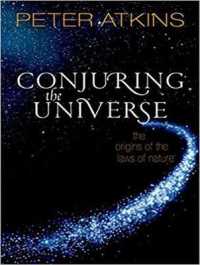- ホーム
- > 洋書
- > 英文書
- > Politics / International Relations
Full Description
This title is available in Open Access.
Policy Analysis of Multi-Actor Systems is an introduction into the art and craft of problem exploration and problem structuring. It positions policy analysis as a scientific discipline focused on systems analysis in a multi-actor context to support better informed decision-making.
The approach presented in this book is considered to be the cornerstone of the curricula of the Faculty of Technology, Policy and Management of Delft University of Technology and underlies the research on (the governance of) socio-technical systems. Systems thinking applied in a multi-actor environment and its inherent multi-disciplinary character is what makes this work stand out from traditional hard- and soft systems approaches. The core of the book is dedicated to systems analysis, actor- or stakeholder-analysis and discusses methods for dealing with uncertainty. These analytical activities combined lead to a rich problem description and to plans for further research. Due to the stepwise approach this book serves as a basis for any problem analysis both for our bachelor and master students, our alumni worldwide and any interested practitioners.
Contents
1 Introduction; 1.1 The Challenge of Policy Analysis in Multi-Actor Systems; 1.2 The Problem Structuring Focus; 1.3 Approach Taken and Outline of This Course Book; 2 Problem Formulation in Complex Environments; 2.1 Coping with Complexity; 2.2 Framing Complexity; 2.3 Problem Formulation as Part of Problem-Solving; 2.4 Points of Intervention; 2.5 Problem Formulation as First Step in Problem Analysis; 2.6 Takeaways; 3 Systems Analysis; 3.1 Introduction to Systems Analysis; 3.2 Conceptual Framework for Systems Analysis; 3.3 A Method to Develop a System Diagram; 3.4 Mapping Causal Relations; 3.5 Overview of the System and Its Boundaries: The System Diagram; 3.6 Takeaways; 4 Actor Analysis; 4.1 Introduction: Why Actor Analysis?; 4.2 Conceptual Framework for Actor Analysis; 4.3 Methods for Actor Analysis; 4.4 Steps in Actor Analyses; 4.5 Points of Attention in Actor Analysis; 4.6 Takeaways; 5 Exploring the Future; 5.1 Introduction; 5.2 Analysing and Classifying Uncertainties; 5.3 Overview of Methods for Exploring the Future; 5.4 Developing Scenarios; 5.5 Example: Scenario Analysis for Examining Civil Aviation Infrastructure Options in the Netherlands; 5.6 Beyond Exploring the Future; 5.7 Takeaways; 6 From Synthesis to Plan of Action; 6.1 System Diagram Revision; 6.2 Rich Problem Description; 6.3 Characterizing and Framing the Problem; 6.4 Knowledge Gaps; 6.5 The Role of the Analyst; 6.6 Proposing Follow-On Activities; 6.7 Takeaways; 7 The Research Plan; 7.1 Introduction; 7.2 Why? - Knowledge Gaps; 7.3 What? - Research Questions; 7.4 How? - Research Methods; 7.5 When? Who? - Research Planning; 7.6 Conclusion; 7.7 Takeaways; 8 Preparing an Issue Paper; 8.1 Role of an Issue Paper in Policy Analysis; 8.2 The Key Elements of an Issue Paper; 8.3 Different Problem Diagnoses, Different Storylines; 8.4 A Systematic Approach to Preparing Issue Papers







